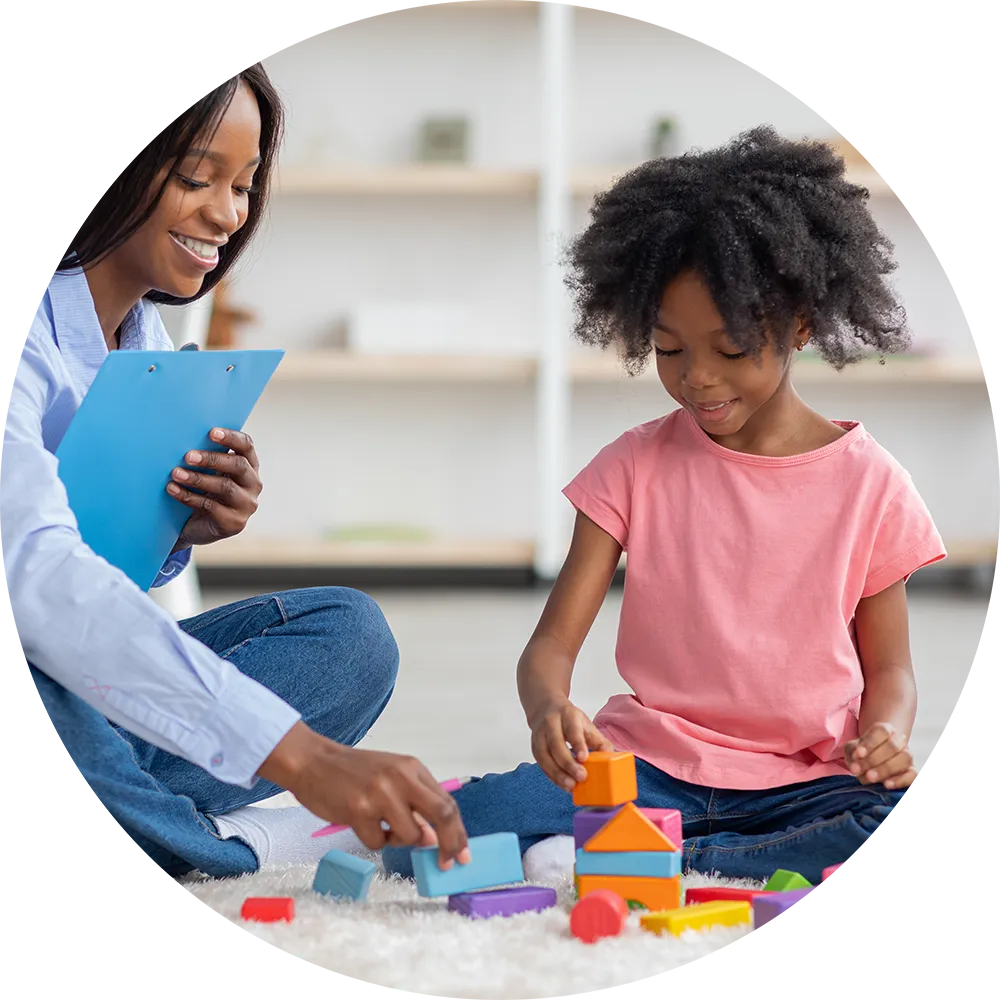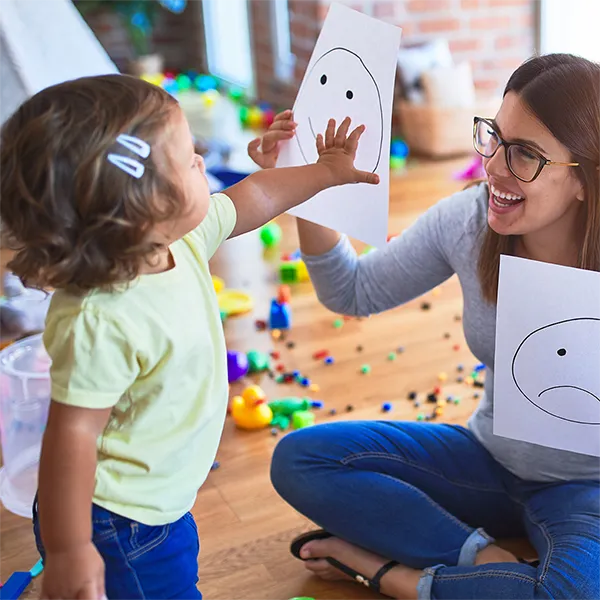
Child-Centered Child Play Therapy
Nurturing Emotional Growth Through Play
At Start My Wellness, we understand the unique ways children express themselves, especially children who cannot communicate their feelings or needs directly.
Child-centered play therapy is a powerful approach that allows children to explore emotions, build confidence, and develop healthy coping strategies–all while engaging in activities they enjoy.
Child-Centered Play Therapy Goals
Improve Self-Esteem
Learn New Coping Strategies
Develop a More Positive Mindset
Engage in Decision-Making
Resolve Problematic Behaviors
Assume More Responsibility
Child-Centered Play Therapy at Start My Wellness
Child-Centered Play Therapy (CCPT) is a unique therapeutic approach designed for children ages 3-10 who struggle to express emotions or experiences verbally. Harnessing the natural language of play, CCPT allows children to explore their feelings in a safe, supportive, and fun environment. Guided by a trained therapist, children use toys, games, and expressive activities to communicate their thoughts, process difficult emotions, and work through challenges at their own pace.
One of the ways CCPT is so unique is that it’s non-directive, meaning the therapist guides sessions, empathizes with the child, and provides unconditional positive support. This child-centered process allows children to express themselves in natural and comfortable ways. Further, this freedom fosters a sense of autonomy, which can build confidence, help them academically, and allow children to become more self-accepting.

How Child Therapy Can Help
CCPT is most effective for children who have difficulty expressing their emotions through words alone. However, it can benefit all children as it facilitates the natural language of play and allows children to explore their interests, feelings, and challenges in a comfortable and engaging setting. Research supports the efficacy of child-centered play therapy in managing the following issues:
Anxiety and Worry
Autism Spectrum Disorder
Depression
Behavioral Issues
Oppositional Defiant Disorder
Self-Esteem
Academic Performance
Early Trauma
Speech Difficulties
Benefits of Child-Centered Play Therapy: Empowering Your Child Through Expression
Promotes Emotional Expression
Builds Problem-Solving Skills
Enhances Self-Esteem
Reduces Stress and Anxiety
Improves Academic Performance
Reduces Behavioral Issues
Our Our Licensed Child Therapists
Specialties
Type of Therapy
Patient Population
Issue Focus
Insurance Accepted
Read Full Bio +
Specialties
Type of Therapy
Patient Population
Issue Focus
Insurance Accepted
Read Full Bio +
Specialties
Type of Therapy
Patient Population
Issue Focus
Insurance Accepted
Read Full Bio +
Specialties
Type of Therapy
Patient Population
Issue Focus
Insurance Accepted
Read Full Bio +
Make an Appointment
Call (248) 514-4955
-OR-
Frequently Asked Questions About Child-Centered Play Therapy
HIDDEN - DO NOT DELETE
How Will Play Therapy Help My Child?
What Happens in Child Play Therapy Sessions?
In CCPT, children work in a safe, supportive environment to express feelings, develop coping skills, and address behavioral and emotional challenges through play. Child-centered therapy is non-directive: the therapist facilitates and positively supports the child during the process, allowing them to constructively solve problems and reach conclusions independently. However, CCPT is not open-ended: within therapy, play is structured to achieve therapeutic goals, such as helping prevent social difficulties or achieve optimal emotional growth for their development.
What Are Some Types of Play that Children Engage with in Therapy?
Play is sometimes seen as a child’s work. Toys and activities are the vocabulary children use to express themselves. Play therapists use these tools to help children express thoughts and feelings they may otherwise have difficulty with. Guiding them through the process, play therapists encourage children to express conflicts and hurts in a safe and familiar way. In the process, children learn to master their worries which leads to a happier and more peaceful developmental progression.
Examples of play therapy activities are:
- Energetic play, gross motor play and physical activities
- Building, such as with legos or jigsaw puzzles
- Symbolic play with dolls or figurines to act out social scenarios
- Nurturing play with dolls or stuffed animals to act out caregiving
- Conflict-based play with toy soldiers or characters to express and learn to manage anger without judgment
- Role-playing through imaginative play, or dramatically acting out roles
- Mimetic play, or repeating certain sounds, words, or songs
- Play with rules, such as board games
What Are the 8 Principles of Child Therapy?
Child-Centered Play Therapy is influenced by the work of person-centered psychologist Carl Rogers, who believed that people have an innate tendency towards growth and self-actualization and that the therapist’s role is to facilitate this process. Virginia Axline used Rogers’ theory of person-centered approach to develop child-centered play therapy in 1947, which has the following principles:
- Develop a friendly and empathetic alliance with the child.
- Accept the child nonjudgmentally.
- Create an environment where children can express themselves freely.
- Recognize and reflect the child’s feelings to help them develop self-awareness.
- Recognize and respect the child’s ability to solve their own problems.
- Be non-directive, allow the child to guide therapy
- Recognize that therapy is a gradual process
- Set necessary limits and goals that are constructive and realistic.
Should I Be Directly Involved in Therapy Sessions as a Parent?
In some cases, parents may be directly involved in therapy, which is influenced primarily by the child’s developmental level and type of treatment. Younger children benefit from parents being involved directly in sessions, while older teenagers may prefer some level of autonomy in their sessions. Parents can play an equally important role by reinforcing therapeutic strategies at home.
As a Parent, How Can I Help My Child Outside of Therapy?
Can Family Be Involved in Child Therapy?
Family Therapy is commonly used with child therapy to reinforce education across the household, address family relationship issues that may contribute to a child’s challenges, and improve treatment effectiveness.



